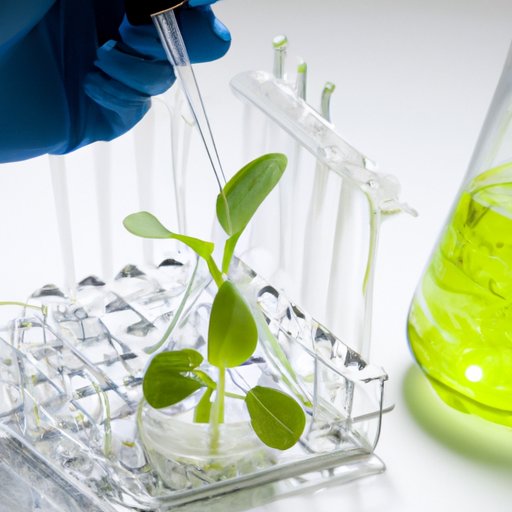Introduction
A pure culture is a single population of cells or microorganisms that are isolated from other species. It is a type of culture media in which only one type of organism is present. Pure cultures are important in microbiology and biotechnology as they allow researchers to study the properties and characteristics of a single organism without interference from other species. They can be used to grow and propagate organisms for further study or to produce products such as drugs and enzymes.

Overview of the Pure Culture
The concept of a pure culture was first introduced by Louis Pasteur in 1857. He believed that many diseases were caused by microorganisms, and he wanted to isolate them so he could study them. Since then, the technique has been developed and refined, allowing researchers to isolate and study a single species of microorganism in a controlled environment. A pure culture can include bacteria, fungi, algae, and protozoa.
Pure cultures are important because they allow researchers to study the properties and characteristics of a single organism without interference from other species. This makes it easier to identify new species and create treatments for diseases caused by microorganisms. They also provide a way to grow and propagate organisms for further study or to produce products such as drugs and enzymes.

Cultivation Techniques for a Pure Culture
Creating a pure culture begins with the isolation of a single cell or organism from a mixed population. This can be done using a variety of methods such as serial dilution, streaking plates, or filtration. Once the organism has been isolated, it can be grown on a medium that supports its growth. The medium must be free of other organisms, and the conditions must be carefully controlled to ensure that only the desired organism will grow.
Maintaining a pure culture requires careful monitoring and manipulation of the environment. The temperature, pH, and nutrient levels must be carefully monitored and adjusted as needed. Contamination must also be avoided by using sterile equipment and procedures.
Uses of a Pure Culture
Pure cultures have a wide range of uses in biotechnology, food production, and medical research. In biotechnology, they are used to produce proteins, enzymes, and other compounds that can be used in industrial processes. In food production, they can be used to produce fermented foods such as beer, wine, cheese, and yogurt. In medical research, they are used to study the effects of bacteria and viruses on human health.
Pure cultures are also used to create vaccines. Vaccines are created by exposing a pure culture of a virus or bacteria to an antigen, which triggers an immune response in the body. The resulting antibodies can then be used to protect against future infection.

Potential Challenges of a Pure Culture
Although pure cultures are useful, they can also pose challenges. Contamination is a major concern, as even a small amount of another species can disrupt the results of an experiment or product. Mutation is also a risk, as the environment in which a pure culture is grown can cause changes in the organism’s genetic material.
Future of Pure Cultures
In the future, pure cultures are likely to become even more important as biotechnology advances. They can be used to create novel organisms with specific traits, such as enhanced antibiotic resistance or increased production of a certain compound. They can also be used to create “designer” microbes that can be used in industrial processes or to clean up contaminated environments.
Researchers are also exploring ways to use pure cultures to create new treatments for diseases. For example, some scientists are attempting to engineer bacteria that can recognize and attack cancer cells. Others are studying ways to use pure cultures to create personalized medicines that are tailored to an individual’s needs.
Conclusion
Pure cultures are an essential tool in biotechnology, food production, and medical research. They allow researchers to study the properties and characteristics of a single organism without interference from other species. They can also be used to create vaccines, produce proteins and enzymes, and create designer organisms. Despite the potential challenges posed by contamination and mutation, pure cultures are likely to become even more important in the future as biotechnology advances.
(Note: Is this article not meeting your expectations? Do you have knowledge or insights to share? Unlock new opportunities and expand your reach by joining our authors team. Click Registration to join us and share your expertise with our readers.)
